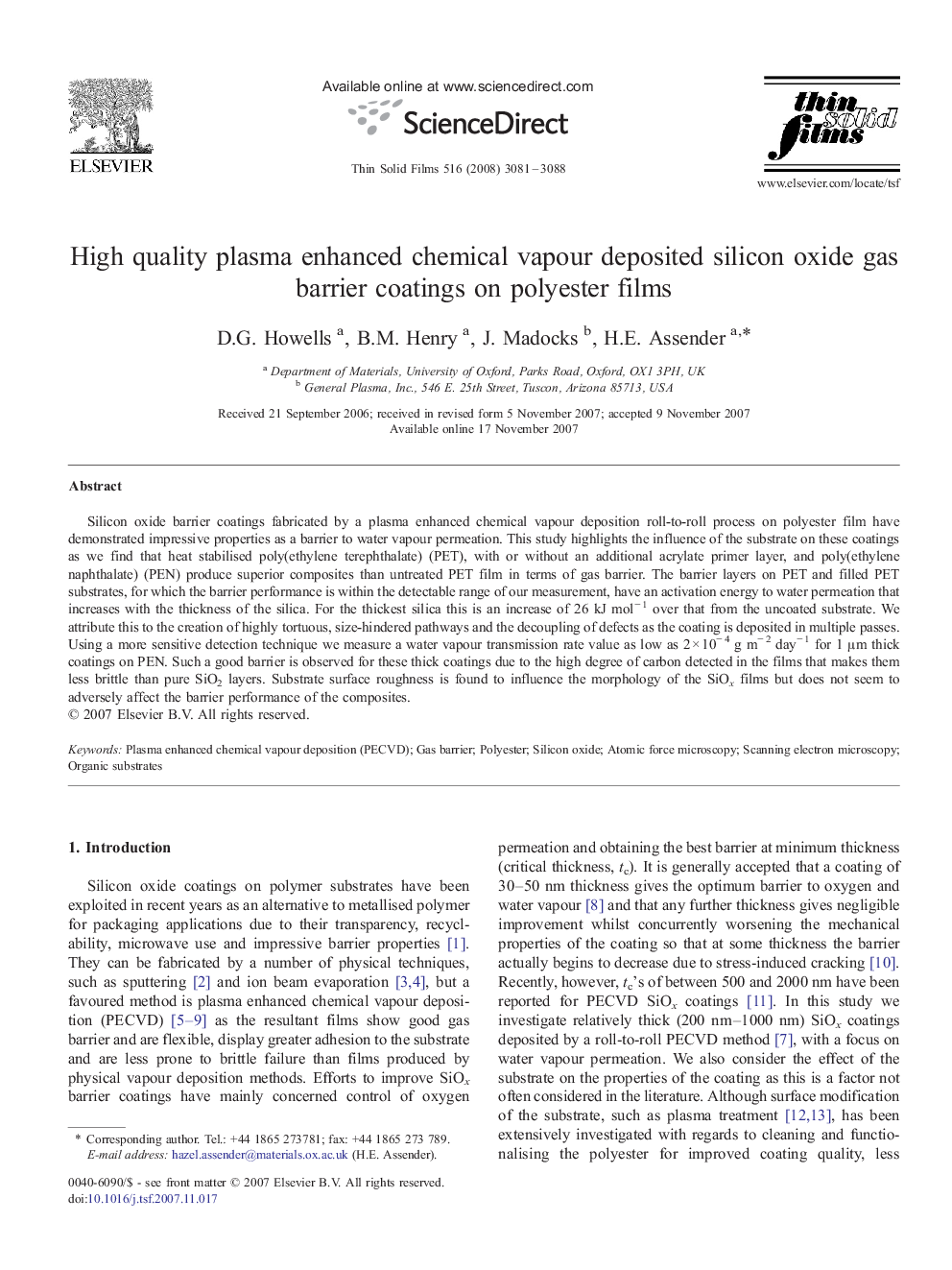| Article ID | Journal | Published Year | Pages | File Type |
|---|---|---|---|---|
| 1673450 | Thin Solid Films | 2008 | 8 Pages |
Silicon oxide barrier coatings fabricated by a plasma enhanced chemical vapour deposition roll-to-roll process on polyester film have demonstrated impressive properties as a barrier to water vapour permeation. This study highlights the influence of the substrate on these coatings as we find that heat stabilised poly(ethylene terephthalate) (PET), with or without an additional acrylate primer layer, and poly(ethylene naphthalate) (PEN) produce superior composites than untreated PET film in terms of gas barrier. The barrier layers on PET and filled PET substrates, for which the barrier performance is within the detectable range of our measurement, have an activation energy to water permeation that increases with the thickness of the silica. For the thickest silica this is an increase of 26 kJ mol− 1 over that from the uncoated substrate. We attribute this to the creation of highly tortuous, size-hindered pathways and the decoupling of defects as the coating is deposited in multiple passes. Using a more sensitive detection technique we measure a water vapour transmission rate value as low as 2 × 10− 4 g m− 2 day− 1 for 1 μm thick coatings on PEN. Such a good barrier is observed for these thick coatings due to the high degree of carbon detected in the films that makes them less brittle than pure SiO2 layers. Substrate surface roughness is found to influence the morphology of the SiOx films but does not seem to adversely affect the barrier performance of the composites.
